Backing up a travel trailer can be daunting, but with the right techniques, it can be a breeze. SIXT.VN is here to guide you through every step, ensuring a smooth and stress-free experience as you explore Vietnam’s stunning landscapes with your RV. Master maneuvering, site selection, and safety tips, making your RV adventures memorable and safe. Whether you’re planning a solo trip or a family vacation, understanding trailer dynamics and utilizing campground resources will make your journey seamless.
1. Understanding the Basics of Travel Trailer Backing
Backing up a travel trailer involves understanding the dynamics of how your tow vehicle and trailer interact. With practice, you’ll confidently navigate various campsite scenarios and discover the beauty of Vietnam.
1.1. Why is Backing Up a Travel Trailer Challenging?
Backing up a travel trailer is challenging due to the counterintuitive steering required and the trailer’s pivot point. The trailer reacts opposite to your steering input, making it difficult to predict its movement. According to a study by the Recreational Vehicle Safety & Education Foundation (RV Safety), new RVers often struggle with this aspect, leading to frustration and potential accidents. The pivot point amplifies any steering error, requiring precise and slow movements. Successfully backing up a travel trailer requires understanding these dynamics, practicing in open spaces, and mastering the techniques to control the trailer’s direction.
1.2. Key Terminology for Travel Trailer Backing
Understanding the terminology can greatly enhance communication and comprehension during the backing process.
| Term | Definition |
|---|---|
| Tongue Weight | The amount of the trailer’s weight that presses down on the hitch ball of the tow vehicle. |
| Hitch Ball | The ball-shaped coupling device on the tow vehicle that connects to the trailer’s coupler. |
| Coupler | The part of the trailer that attaches to the hitch ball. |
| Pivot Point | The point where the trailer and tow vehicle connect, influencing the trailer’s turning dynamics. |
| Jackknife | A situation where the trailer and tow vehicle form a sharp angle, potentially causing damage. |
| Unwinding | Straightening the tow vehicle after making a turn to prevent jackknifing. |
| Sightlines | The driver’s field of vision, essential for monitoring the trailer’s position and surrounding obstacles. |
| Spotter | A person assisting the driver by providing guidance and observing blind spots. |
| Travel Trailer Length | Overall length of travel trailer |
1.3. Essential Equipment for Safe Backing
Having the right equipment can make backing up a travel trailer safer and more manageable.
- Spotter: A reliable spotter is invaluable for guiding you and alerting you to obstacles.
- Walkie-Talkies: For clear communication with your spotter, especially in noisy environments.
- Cones or Markers: To mark the campsite boundaries and assist with visualizing the backing path.
- Wheel Chocks: To secure the trailer once it is in position.
- Leveling Blocks: To ensure the trailer is level once parked.
- Extended Mirrors: These provide a wider field of vision, helping you see the trailer’s position.
- Backup Camera: A backup camera offers a clear view of what’s behind the trailer, reducing blind spots.
1.4. Understanding Trailer Dynamics
Understanding how your trailer responds to your tow vehicle’s movements is essential.
- Pivot Point Awareness: Be aware of the pivot point between your tow vehicle and trailer. Small steering adjustments can lead to significant changes in the trailer’s direction.
- Slow and Steady: Backing up slowly gives you more time to react to changes and make necessary adjustments.
- Practice: Practice in an open, flat area to get a feel for how your trailer responds to your steering inputs.
2. Planning and Preparation for Backing Up
Effective planning and preparation are vital for a stress-free backing experience. This includes assessing the campsite, understanding campground etiquette, and preparing your vehicle and trailer.
2.1. Site Assessment and Selection
Before attempting to back into a campsite, it’s essential to assess the site thoroughly. According to the National Association of RV Parks and Campgrounds (ARVC), understanding the layout and potential obstacles can prevent accidents and streamline the process.
- Check for Obstacles: Identify any trees, rocks, utility poles, or other obstructions that could impede your path.
- Note the Terrain: Uneven ground can make the process more difficult. Look for slopes or depressions that might affect your trailer’s position.
- Consider the Angle: Determine the angle at which you’ll need to back in. Sites that are perpendicular to the road are generally more challenging than those at an angle.
- Examine the Space: Ensure there is enough space to maneuver your trailer without hitting anything.
2.2. Campground Etiquette
Following campground etiquette ensures a pleasant experience for everyone.
- Avoid Blocking Roads: When surveying the site or maneuvering your trailer, avoid blocking the campground road.
- Be Mindful of Neighbors: Keep noise to a minimum, especially early in the morning or late at night.
- Respect Boundaries: Be aware of the boundaries of your campsite and avoid encroaching on neighboring sites.
- Use Spotters: Utilize a spotter to guide you and ensure you don’t hit any obstacles or disturb other campers.
2.3. Pre-Backing Checklist
Before you start backing up, run through this checklist to ensure everything is in order.
- Clear the Area: Make sure the path is clear of people, pets, and obstacles.
- Adjust Mirrors: Adjust your mirrors for the best possible view of the trailer and surrounding area.
- Communicate with Spotter: Establish clear hand signals or use walkie-talkies to communicate with your spotter.
- Check Connections: Ensure all connections (lights, brakes) are properly connected and functioning.
- Set Markers: Place cones or markers at the corners of the campsite to help guide your backing.
2.4. Choose the Right Campsite
Selecting the right campsite can significantly ease the backing process.
- Pull-Through Sites: If available, opt for a pull-through site to avoid backing up altogether.
- Angle vs. Perpendicular: Angled sites are generally easier to back into than perpendicular sites.
- Site Size: Ensure the site is large enough to accommodate your travel trailer comfortably.
- Accessibility: Consider the ease of access to utilities and amenities.
3. Step-by-Step Guide to Backing Up Your Travel Trailer
This comprehensive guide provides a step-by-step approach to backing up your travel trailer, making the process manageable and less stressful.
3.1. Initial Positioning
The initial positioning of your tow vehicle and trailer is crucial for a successful backing maneuver.
- Pull Past the Campsite: Pull your tow vehicle and trailer past the campsite far enough so that the rear of the trailer is slightly beyond the front corner of the campsite.
- Assess the Angle: Evaluate the angle between your trailer and the campsite entrance. This will determine how much you need to turn the steering wheel.
- Straighten the Wheel: Before starting to back up, straighten your steering wheel.
3.2. The Art of Steering
Steering while backing up a travel trailer is counterintuitive.
- Opposite Steering: Remember that to move the trailer to the left, you need to turn the steering wheel to the right, and vice versa.
- Small Adjustments: Make small, incremental adjustments to the steering wheel to avoid overcorrecting.
- Use Mirrors: Rely heavily on your mirrors to monitor the trailer’s position and avoid obstacles.
3.3. Executing the Turn
The turn is the most challenging part of backing up a travel trailer. Take your time and make small adjustments.
- Slow and Steady: Back up slowly, using your mirrors and spotter to guide you.
- Turn the Wheel: Turn the steering wheel in the opposite direction of where you want the trailer to go.
- Monitor the Trailer: Keep a close eye on the trailer’s movement and adjust your steering as needed.
- Avoid Jackknifing: Be careful not to turn the steering wheel too sharply, which can cause the trailer to jackknife.
3.4. Unwinding and Straightening
Once the trailer is moving in the right direction, you’ll need to unwind the turn and straighten out the trailer.
- Unwind the Wheel: As the trailer approaches the desired position, begin to unwind the steering wheel.
- Straighten the Trailer: Straighten out the trailer by gently adjusting the steering wheel until the trailer is aligned with the campsite.
- Pull Forward if Needed: If you find yourself at an awkward angle, don’t hesitate to pull forward and reposition.
3.5. Final Adjustments and Positioning
Once the trailer is mostly in place, make final adjustments to ensure it’s perfectly positioned.
- Use Markers: Use the cones or markers you placed earlier to guide your final positioning.
- Check Clearances: Ensure there is enough clearance on all sides of the trailer.
- Level the Trailer: Use leveling blocks to ensure the trailer is level.
- Secure the Trailer: Place wheel chocks behind the wheels to secure the trailer.
3.6. Dealing with Common Challenges
Even with careful planning, you may encounter challenges while backing up your travel trailer. Here’s how to handle some common issues.
- Narrow Roads: On narrow campground roads, use a spotter to ensure you don’t hit any trees or obstacles.
- Tight Turns: In tight spots, make small, precise adjustments to the steering wheel.
- Sloped Sites: On sloped sites, use leveling blocks to keep the trailer stable.
- Obstacles: If you encounter an obstacle, stop and reassess the situation. Don’t hesitate to pull forward and try again.
4. Advanced Techniques and Tips
Once you’ve mastered the basics, these advanced techniques and tips can help you back up your travel trailer with even more confidence and precision.
4.1. Using Mirrors Effectively
Mirrors are your best friend when backing up a travel trailer. Learn how to use them effectively to maintain visibility and avoid obstacles.
- Adjust Properly: Adjust your mirrors so you can see the sides and rear of the trailer.
- Use Extended Mirrors: Extended mirrors provide a wider field of vision.
- Focus on the Furthest Point: Focus on the furthest point you can see in the mirror to maintain your orientation.
- Alternate Mirrors: Alternate between mirrors to get a comprehensive view of your surroundings.
4.2. Spotter Communication
Effective communication with your spotter is essential for safe and accurate backing.
- Establish Signals: Agree on a set of hand signals before you start backing up.
- Use Walkie-Talkies: Walkie-talkies allow for clear communication, especially in noisy environments.
- Be Clear and Concise: Use clear and concise language when giving instructions.
- Trust Your Spotter: Trust your spotter’s judgment and follow their instructions.
4.3. Practicing Different Scenarios
The more you practice backing up in different scenarios, the more confident you’ll become.
- Empty Parking Lot: Practice in an empty parking lot to get a feel for how your trailer responds to your steering inputs.
- Simulate Campsites: Use cones or markers to simulate different campsite layouts.
- Varying Angles: Practice backing into sites at different angles.
- Tight Spaces: Challenge yourself by practicing in tight spaces.
4.4. Understanding the Proportional Relationship
Understanding the proportional relationship between the steering wheel and the trailer’s movement is crucial for fine-tuning your backing skills. According to engineering studies on vehicle dynamics, the angle of the steering wheel directly affects the angle of the trailer’s pivot. This relationship is not linear; small adjustments in the steering wheel can result in significant changes in the trailer’s direction.
- Steering Sensitivity: Be aware of how sensitive your steering is. Some trailers respond more quickly to steering inputs than others.
- Fine Adjustments: Make small, precise adjustments to the steering wheel to avoid overcorrecting.
- Anticipate Movement: Anticipate how the trailer will respond to your steering inputs and adjust accordingly.
4.5. Navigating Tight Campground Roads
Backing up on narrow campground roads presents unique challenges. Here’s how to navigate them safely.
- Use a Spotter: A spotter is essential for guiding you and alerting you to obstacles.
- Take It Slow: Back up slowly and carefully, using your mirrors to monitor your surroundings.
- Plan Your Route: Plan your route in advance and be aware of any potential obstacles.
- Pull Forward If Needed: If you get into a tight spot, don’t hesitate to pull forward and reposition.
4.6. Dealing with Uphill and Downhill Slopes
Backing up on slopes can be tricky, but with the right techniques, you can do it safely.
- Use Wheel Chocks: Always use wheel chocks to prevent the trailer from rolling.
- Level the Trailer: Use leveling blocks to keep the trailer stable.
- Go Slow: Back up slowly and carefully, using your brakes to control your speed.
- Adjust Steering: Be prepared to adjust your steering to compensate for the slope.
5. Maintaining Your Equipment
Proper maintenance of your towing equipment is crucial for safety and longevity. Regular inspections and maintenance can prevent breakdowns and ensure a smooth travel experience.
5.1. Hitch Maintenance
The hitch is a critical component of your towing setup. Regular maintenance ensures it functions properly and safely.
- Inspect Regularly: Inspect the hitch for signs of wear, rust, or damage before each trip.
- Lubricate: Lubricate the hitch ball and coupler to reduce friction and prevent wear.
- Tighten Bolts: Check and tighten all bolts to ensure the hitch is securely attached to the tow vehicle.
- Clean: Clean the hitch regularly to remove dirt and debris.
5.2. Tire Maintenance
Proper tire maintenance is essential for safety and fuel efficiency.
- Check Pressure: Check tire pressure before each trip and inflate to the recommended level.
- Inspect Tires: Inspect tires for signs of wear, cuts, or bulges.
- Rotate Tires: Rotate tires regularly to ensure even wear.
- Replace Tires: Replace tires when they reach the end of their lifespan.
5.3. Brake Maintenance
Properly functioning brakes are crucial for safe towing.
- Inspect Brakes: Inspect brakes regularly for signs of wear or damage.
- Adjust Brakes: Adjust brakes as needed to ensure they are functioning properly.
- Test Brakes: Test brakes before each trip to ensure they are working.
- Service Brakes: Have brakes serviced regularly by a qualified mechanic.
5.4. Electrical Connections
Properly functioning electrical connections are essential for trailer lights and brakes.
- Inspect Connections: Inspect electrical connections regularly for signs of corrosion or damage.
- Clean Connections: Clean electrical connections with a wire brush or electrical cleaner.
- Use Dielectric Grease: Use dielectric grease to protect electrical connections from corrosion.
- Test Lights: Test trailer lights before each trip to ensure they are working.
5.5. Suspension System
The suspension system plays a crucial role in ride quality and stability.
- Inspect Springs: Inspect springs for signs of wear or damage.
- Check Shocks: Check shocks for leaks or damage.
- Lubricate Components: Lubricate suspension components to reduce friction and prevent wear.
- Replace Worn Parts: Replace worn suspension parts to maintain optimal performance.
6. Safety Considerations
Safety should always be your top priority when backing up a travel trailer. Follow these guidelines to minimize risks and ensure a safe experience.
6.1. Speed Limits
Adhere to posted speed limits and adjust your speed based on road conditions.
- Obey Speed Limits: Always obey posted speed limits.
- Adjust for Conditions: Adjust your speed based on weather, road conditions, and traffic.
- Go Slow: When in doubt, go slow.
6.2. Using a Spotter Safely
A spotter can greatly enhance safety, but it’s important to use them correctly.
- Establish Signals: Agree on a set of hand signals before you start backing up.
- Stay Visible: Make sure your spotter is always visible to you.
- Trust Your Spotter: Trust your spotter’s judgment and follow their instructions.
- Stop Immediately: Stop immediately if your spotter signals you to stop.
6.3. Avoiding Distractions
Avoid distractions while backing up your travel trailer.
- Turn Off Devices: Turn off cell phones and other electronic devices.
- Focus: Focus on the task at hand.
- Minimize Noise: Minimize distractions by keeping the radio off and asking passengers to be quiet.
6.4. Nighttime Backing
Backing up at night presents additional challenges. Here’s how to do it safely.
- Use Lights: Use all available lights to improve visibility.
- Take It Slow: Back up slowly and carefully.
- Use a Spotter: A spotter is essential for guiding you and alerting you to obstacles.
- Be Extra Cautious: Be extra cautious and take your time.
6.5. Weather Conditions
Adverse weather conditions can make backing up more challenging.
- Rain: Rain can reduce visibility and make surfaces slippery.
- Wind: Wind can affect the handling of your trailer.
- Snow and Ice: Snow and ice can make it difficult to control your vehicle.
7. Overcoming Common Fears and Anxieties
Backing up a travel trailer can be intimidating, especially for beginners. Addressing common fears and anxieties can help you approach the task with greater confidence.
7.1. Fear of Jackknifing
Jackknifing is a common fear among new RVers. Here’s how to prevent it.
- Small Adjustments: Make small, precise adjustments to the steering wheel.
- Avoid Sharp Turns: Avoid making sharp turns.
- Unwind the Wheel: Unwind the steering wheel as needed to keep the trailer straight.
- Practice: Practice backing up in an empty parking lot to get a feel for how your trailer responds to your steering inputs.
7.2. Fear of Hitting Obstacles
The fear of hitting obstacles is another common concern. Here’s how to minimize the risk.
- Use a Spotter: A spotter can alert you to obstacles you might not see.
- Take It Slow: Back up slowly and carefully.
- Plan Your Route: Plan your route in advance and be aware of any potential obstacles.
- Check Clearances: Ensure there is enough clearance on all sides of the trailer.
7.3. Performance Anxiety
Performance anxiety can make it difficult to back up your travel trailer, especially when others are watching. Here’s how to overcome it.
- Practice in Private: Practice backing up in an empty parking lot where you won’t feel self-conscious.
- Focus on the Task: Focus on the task at hand and try to ignore any onlookers.
- Remember Your Training: Remember the techniques you’ve learned and trust your abilities.
- Take a Break: If you start to feel overwhelmed, take a break and come back to it later.
7.4. Fear of Blocking Traffic
The fear of blocking traffic is a valid concern, especially on busy campground roads. Here’s how to minimize the impact.
- Choose Off-Peak Times: If possible, back up your trailer during off-peak hours when there is less traffic.
- Use a Spotter: A spotter can help you back up quickly and efficiently, minimizing the time you spend blocking the road.
- Be Prepared to Pull Forward: Be prepared to pull forward and reposition if needed.
- Communicate with Other Campers: Communicate with other campers and let them know you’ll be blocking the road for a few minutes.
7.5. Dealing with Negative Feedback
Occasionally, you may encounter negative feedback from other campers. Here’s how to handle it.
- Stay Calm: Stay calm and avoid getting defensive.
- Acknowledge Concerns: Acknowledge the other camper’s concerns.
- Apologize: Apologize if you’ve inconvenienced them.
- Move On: Once you’ve addressed the situation, move on and focus on enjoying your camping trip.
8. How SIXT.VN Can Help You Plan Your RV Adventure in Vietnam
Planning an RV trip to Vietnam can be overwhelming, but SIXT.VN offers a range of services to make your journey seamless and enjoyable.
8.1. Customized Travel Itineraries
SIXT.VN can create personalized travel itineraries tailored to your interests and preferences.
- Expert Consultation: Our travel experts will work with you to understand your interests and create a customized itinerary.
- Handpicked Destinations: We’ll recommend the best destinations in Vietnam based on your preferences.
- Detailed Planning: We’ll take care of all the details, from booking campsites to arranging activities.
8.2. Airport Transfer Services
Arrive in Vietnam stress-free with SIXT.VN’s reliable airport transfer services.
- Meet and Greet: Our driver will meet you at the airport and help with your luggage.
- Comfortable Transportation: Enjoy a comfortable ride to your hotel or campsite.
- 24/7 Availability: Our airport transfer services are available 24/7.
8.3. Hotel Booking Assistance
Need a break from camping? SIXT.VN can help you find and book the perfect hotel.
- Wide Selection: Choose from a wide selection of hotels to suit your budget and preferences.
- Competitive Rates: We offer competitive rates on hotel bookings.
- Convenient Booking: Book your hotel quickly and easily through our website or app.
8.4. Booking Assistance for Attractions
Want to explore Vietnam’s top attractions? SIXT.VN can help you book tickets and tours.
- Skip the Line: Skip the line and get direct access to popular attractions.
- Guided Tours: Join a guided tour to learn more about Vietnam’s history and culture.
- Best Prices: We offer the best prices on attraction tickets and tours.
8.5. Flight Booking Assistance
Let SIXT.VN take the hassle out of booking your flights to Vietnam.
- Compare Prices: Compare prices from multiple airlines to find the best deal.
- Flexible Options: Choose from a variety of flight options to suit your schedule and budget.
- Expert Advice: Our travel experts can provide advice on the best flights and routes.
8.6. Hanoi Tour Packages
Experience the best of Hanoi with SIXT.VN’s expertly curated tour packages.
- City Tours: Explore Hanoi’s top attractions with our guided city tours.
- Food Tours: Discover the flavors of Hanoi with our delicious food tours.
- Cultural Experiences: Immerse yourself in Vietnamese culture with our unique cultural experiences.
Don’t let the complexities of RV travel hold you back. Contact SIXT.VN at 260 Cau Giay, Hanoi, Vietnam, or call our Hotline/WhatsApp at +84 986 244 358. Visit our website at SIXT.VN to explore our full range of services and start planning your dream RV adventure in Vietnam today!
9. Frequently Asked Questions (FAQs) About Backing Up a Travel Trailer
9.1. How Do I Choose the Right Campsite for Backing Up?
Look for pull-through sites to avoid backing up, or choose angled sites over perpendicular ones. Ensure the site is large enough for your trailer and consider accessibility to utilities.
9.2. What Are the Essential Tools for Backing Up a Travel Trailer?
Essential tools include a spotter, walkie-talkies, cones or markers, wheel chocks, leveling blocks, extended mirrors, and a backup camera.
9.3. How Can I Communicate Effectively with a Spotter?
Establish clear hand signals or use walkie-talkies. Be clear and concise in your instructions, and trust your spotter’s guidance.
9.4. What Should I Do If I Start Jackknifing?
Stop immediately, pull forward to straighten the trailer, and reassess your angle and approach. Make smaller steering adjustments.
9.5. How Do I Maintain Visibility While Backing Up?
Adjust your mirrors properly, use extended mirrors for a wider view, and alternate between mirrors to get a comprehensive view of your surroundings.
9.6. What Are Some Common Mistakes to Avoid When Backing Up?
Avoid oversteering, going too fast, not using a spotter, and failing to check for obstacles before you start.
9.7. How Do I Handle Backing Up on a Narrow Road?
Use a spotter, take it slow, and plan your route in advance. Be prepared to pull forward and reposition if needed.
9.8. What Should I Do If I Encounter an Obstacle?
Stop immediately, reassess the situation, and pull forward to adjust your approach. Don’t hesitate to ask for help.
9.9. How Can I Improve My Backing-Up Skills?
Practice regularly in an empty parking lot, simulate campsite layouts, and vary the angles of your practice maneuvers.
9.10. How Does SIXT.VN Help With Travel Planning in Vietnam?
SIXT.VN offers customized travel itineraries, airport transfer services, hotel and flight booking assistance, and curated tour packages to make your RV adventure seamless and enjoyable.
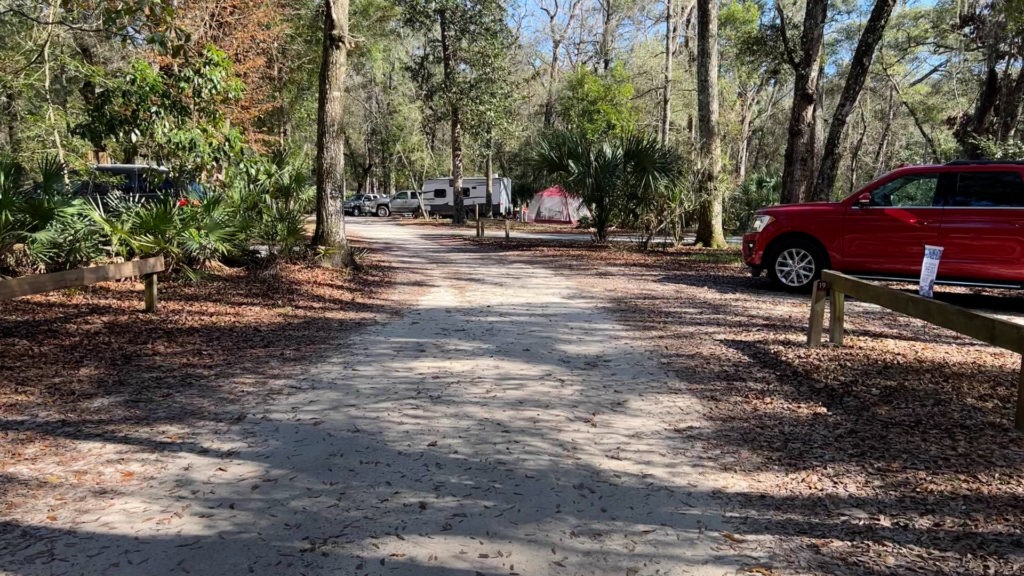 Backing Tight Road 1
Backing Tight Road 1
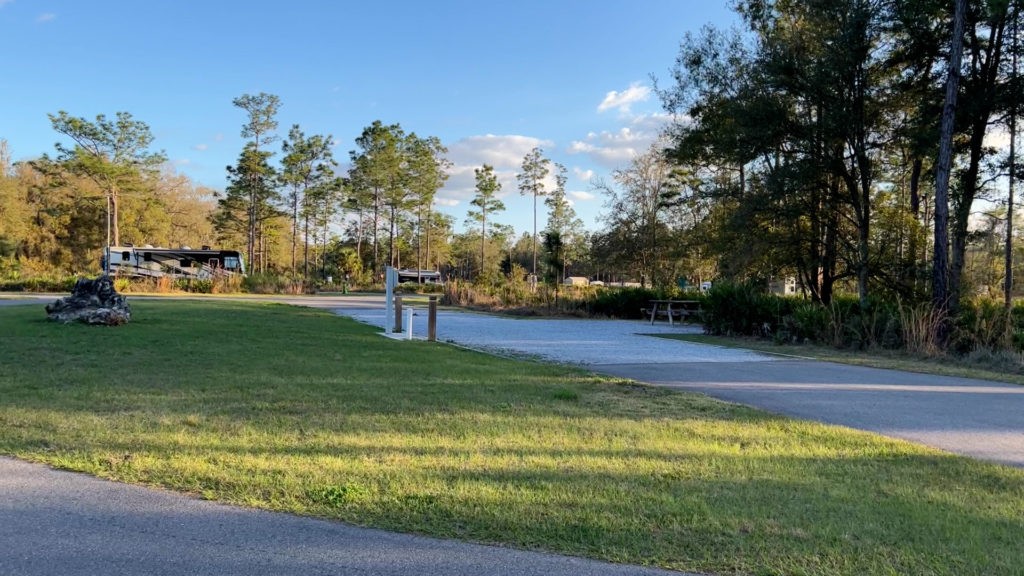 Backing Pull Through Site
Backing Pull Through Site
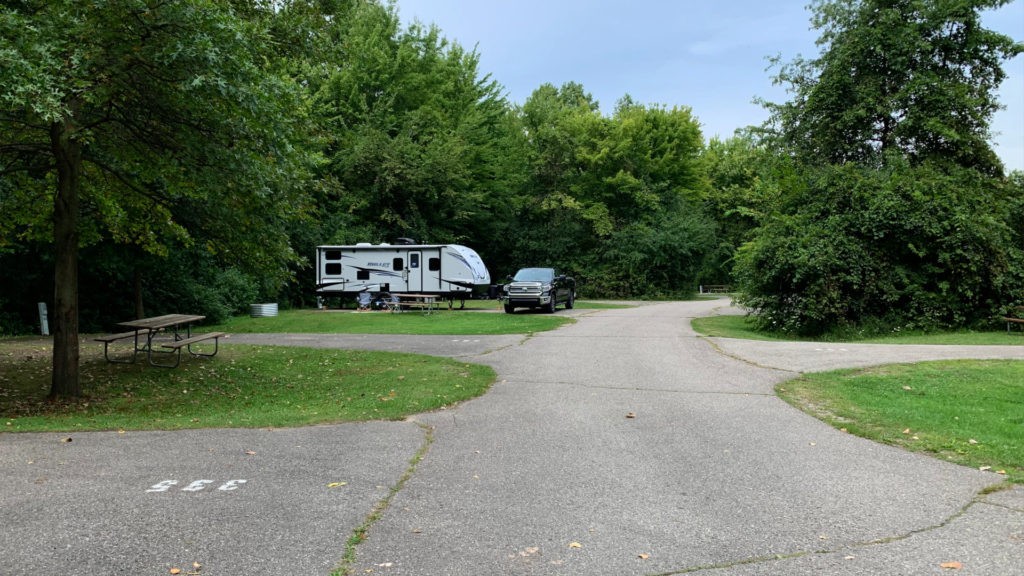 Backing Time of Week
Backing Time of Week
 Backing Satellite View
Backing Satellite View
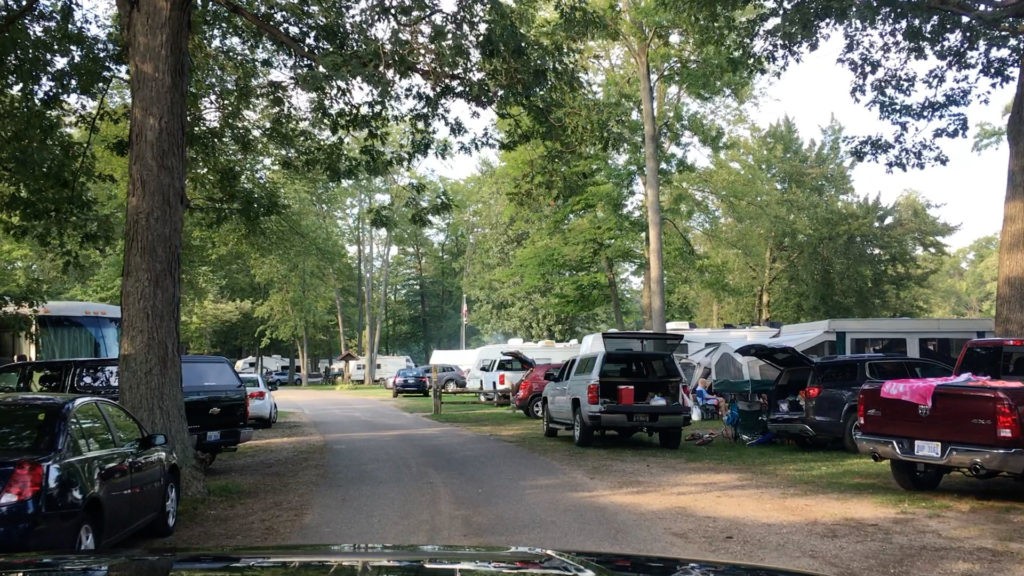 Backing Crowded Campground
Backing Crowded Campground
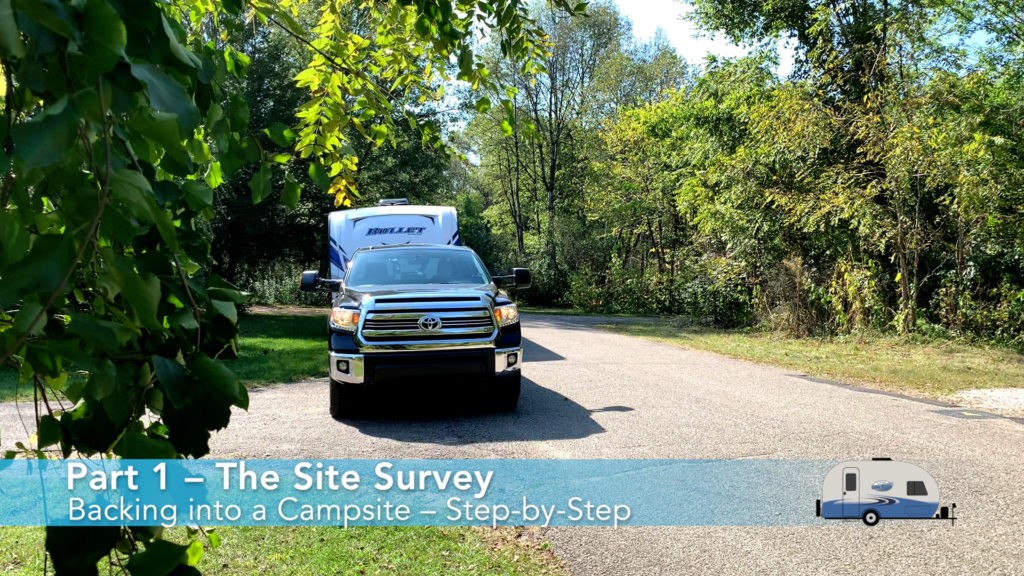 Backing Part 1
Backing Part 1
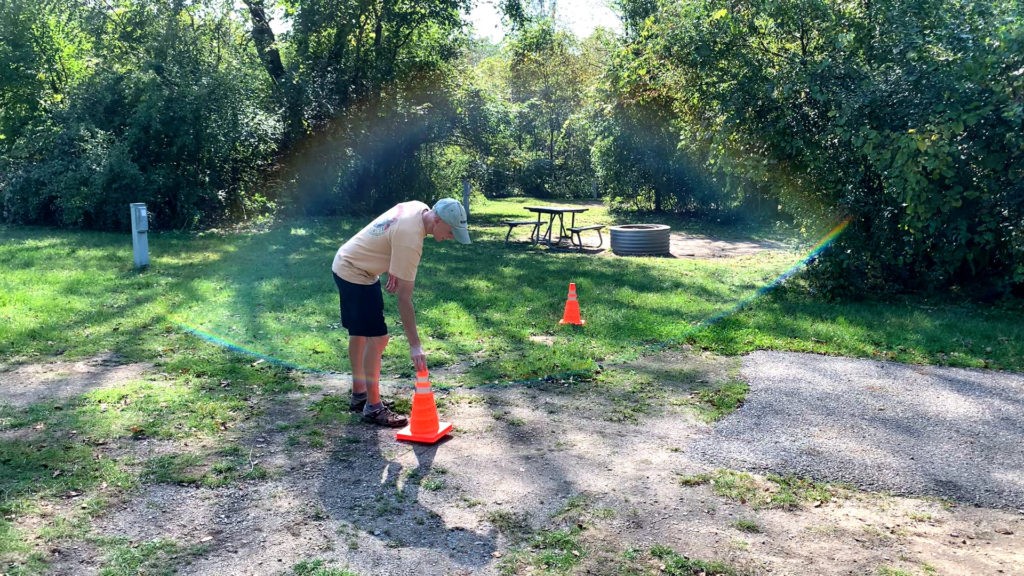 Backing Cones
Backing Cones
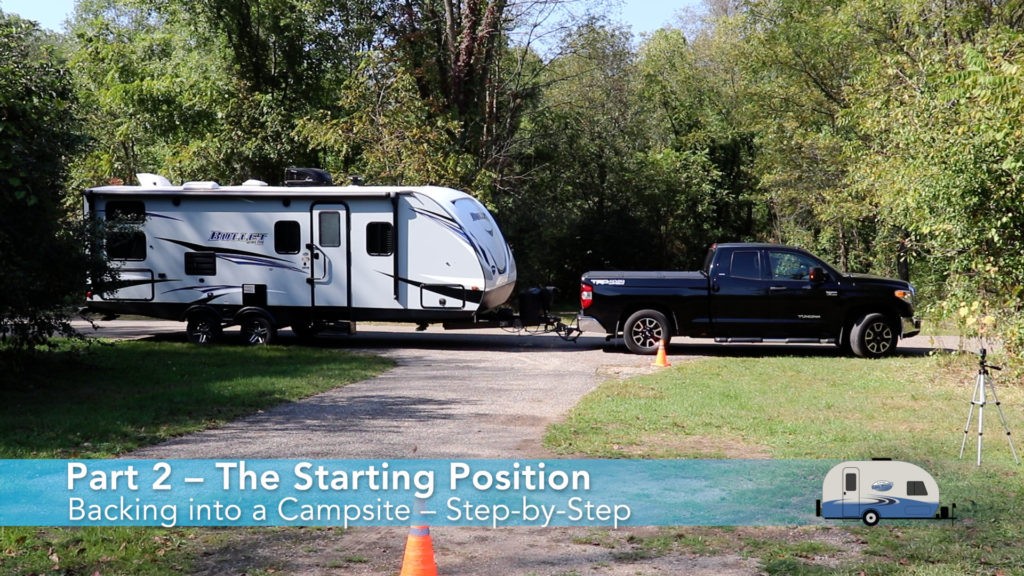 Backing Part 2
Backing Part 2
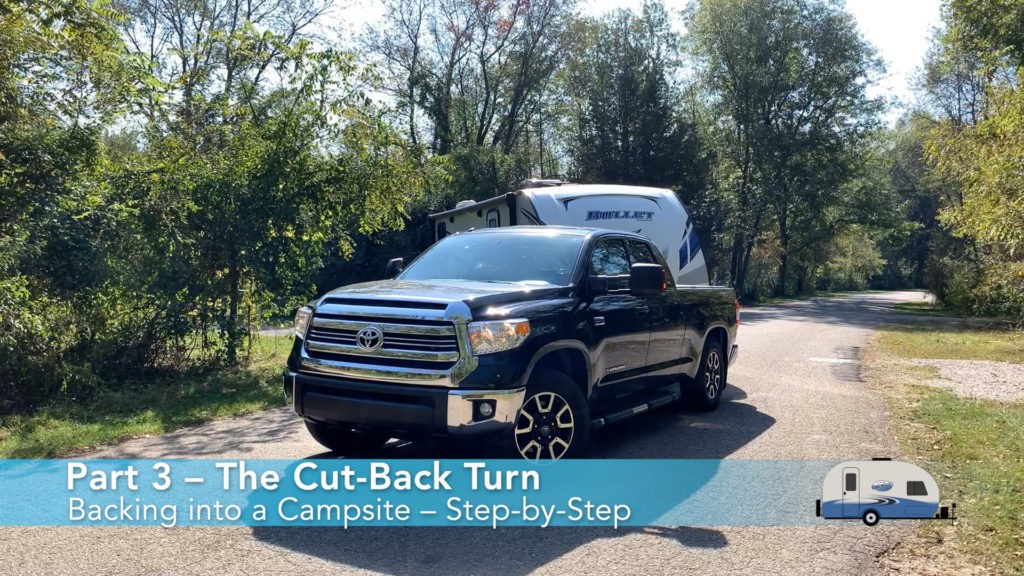 Backing Part 3
Backing Part 3
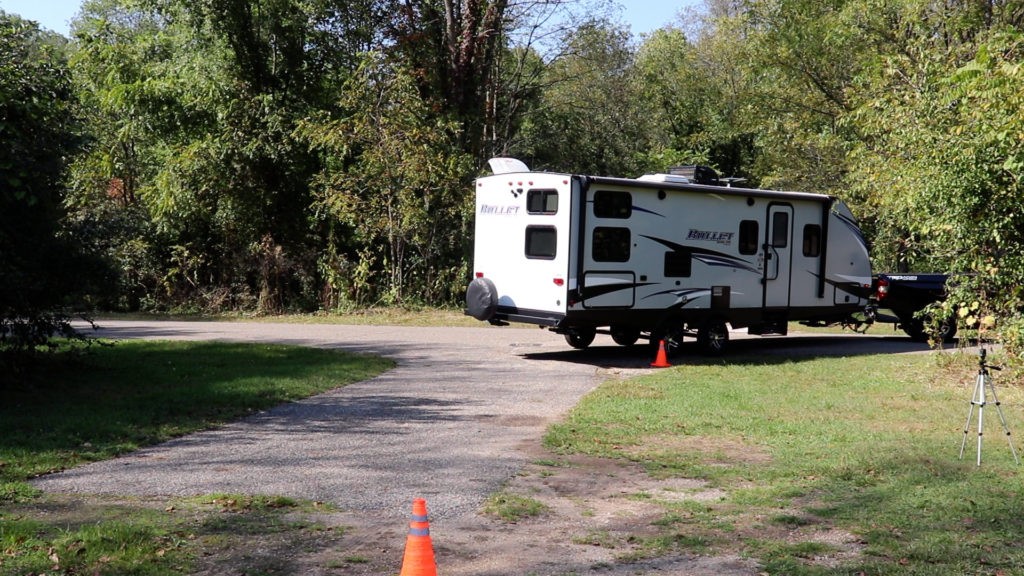 Backing Rear View
Backing Rear View
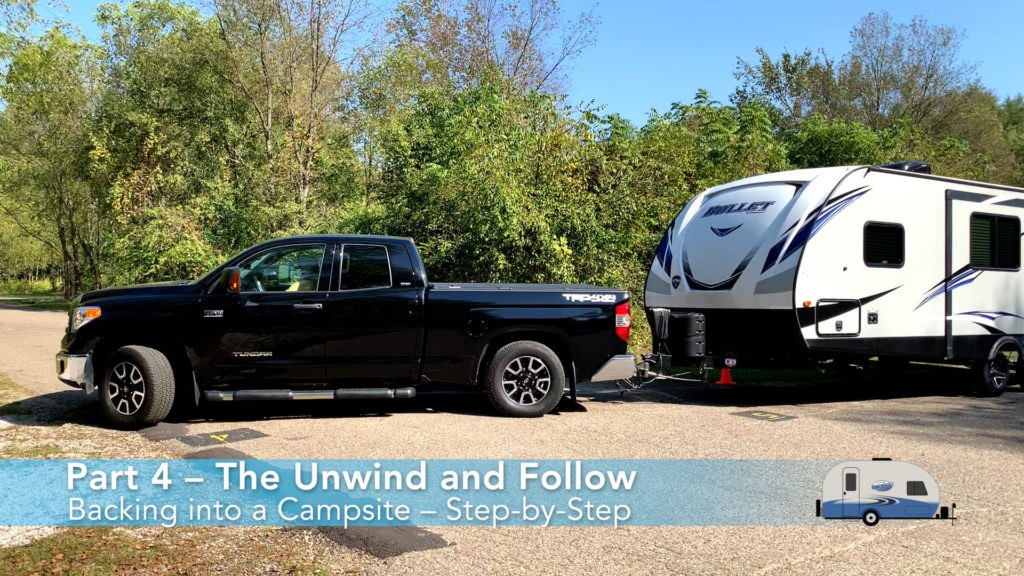 Backing Part 4
Backing Part 4
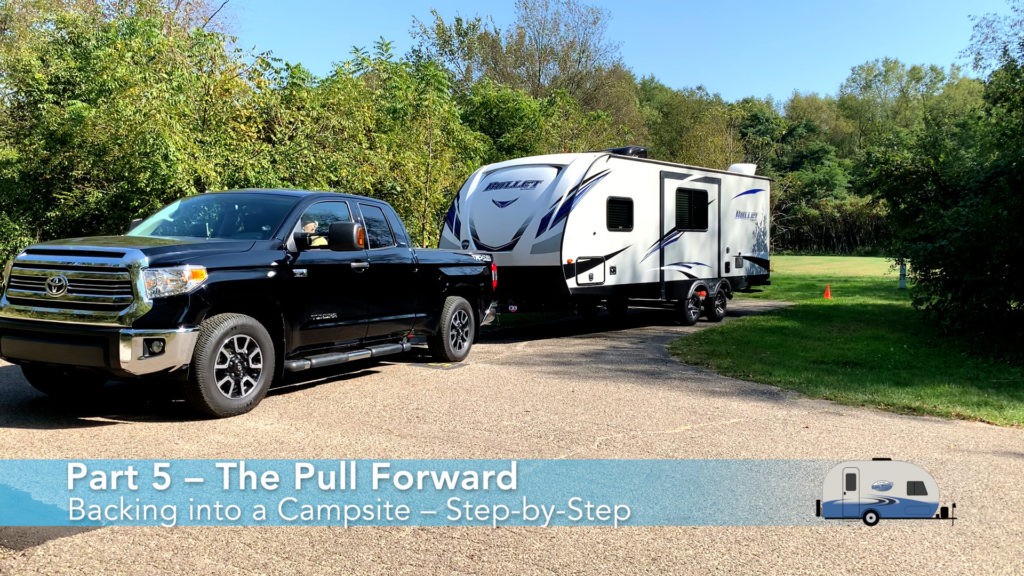 Backing Part 5
Backing Part 5
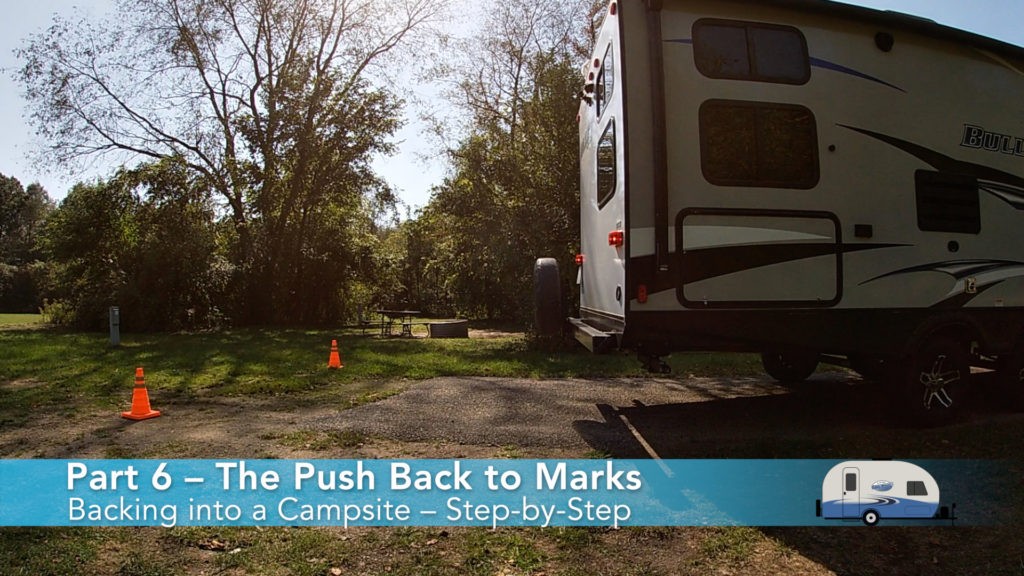 Backing Part 6 1
Backing Part 6 1



